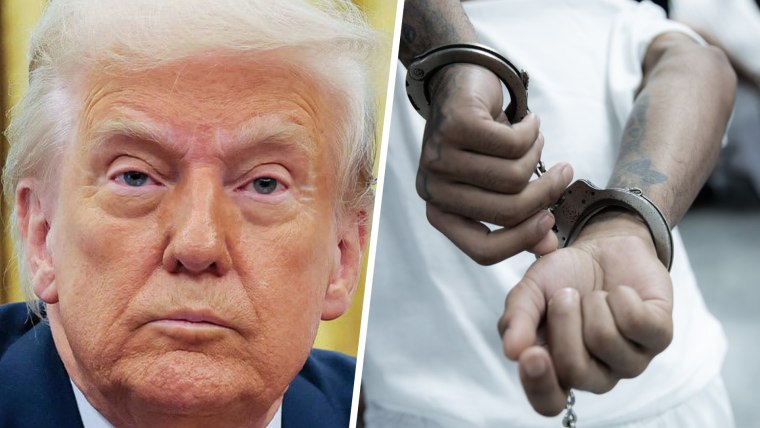This is an adapted excerpt from MSNBC legal correspondent Lisa Rubin’s YouTube series “Can They Do That? With Lisa Rubin.”
A constitutional crisis is a moment where there is some kind of paralysis, or possibly abuse, of the Constitution that has no obvious solution. There’s no question that, under the leadership of Donald Trump, that’s exactly the moment America is in right now.
So much of what the executive branch does is things that will never get to a court. It’s up to the White House to constrain itself.
Some will argue that this country entered into a constitutional crisis only recently, when the administration was accused of disobeying a Supreme Court order regarding the mistaken deportation of Kilmar Abrego Garcia, but it came before that. If the administration can’t constrain itself from violating the Constitution or statutes so flagrantly and frequently, then the country is already in a place where a constitutional crisis has occurred.
The truth is, we’ve been in a constitutional crisis since the executive branch decided it wouldn’t pay attention to any internal legal constraints. As someone who served in the Office of Legal Counsel in the Justice Department, I spent a lot of time during Joe Biden’s administration advising what the president could and couldn’t do. So much of what the executive branch does is things that will never get to a court. It’s up to the White House to constrain itself.
The moment I realized we were in a constitutional crisis was Jan. 20. Shortly after his inauguration, Trump issued an executive order seeking to end birthright citizenship. It’s an order that is flagrantly unconstitutional. It doesn’t have any real legal defense. The Trump administration knows that, but they issued it anyway. That kind of behavior — “I’m going to do it unless and until someone tells me not to, and that someone is a court that’s going to act slowly” — shows me that we’ve got an executive branch that doesn’t see itself constrained by law. That’s incredibly dangerous.
Trump’s actions are breaking a long tradition of the executive branch policing itself. Across administrations, executive branch officials, including career employees, have held up this tradition. One of the very first moves of this administration was to try to get rid of as many of those people as possible. That’s a pretty good sign that they’re not trying to constrain themselves.
This situation has taken this constitutional crisis even further into the red.
Now, I’m not saying they’re completely unconstrained. There are political constraints on the president’s behavior. He can’t just do whatever he wants. But there is so much that the executive branch does that will never see a courtroom. Or if it does see a courtroom, the way in which the court is able to intervene is very narrow.
That’s what we’re seeing right now with the Supreme Court and the deportation of Abrego Garcia. The White House is playing with what the court has told it, knowing that it holds a lot of the cards. The court doesn’t have an army. It can’t march into El Salvador, and the Trump administration is taking advantage of that.
This situation has taken this constitutional crisis even further into the red. At some point, people might stop paying attention because there’s so much lawlessness happening. But right now, we have an administration that is unconstrained by any internal legal constraints and flirting with ignoring the Supreme Court. This is really unprecedented territory.
